AI in Five, Fifty and Five Hundred Years — Part Two — Fifty Years
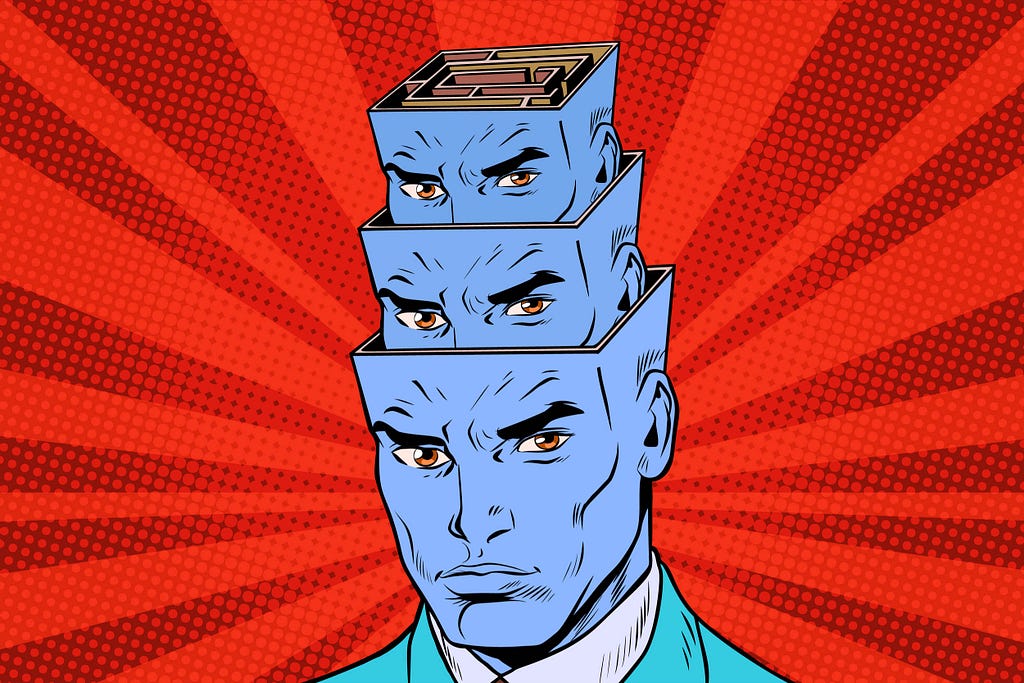
Check out part one of this series for what the next five to fifteen years looks like in AI. In part two we get super sci-fi and see if our crystal ball can reach 50 years into the future.
###########################################
“Any sufficiently advanced technology is indistinguishable from magic.”
— Arthur C Clark
Welcome to 2069.
Intelligence infuses every aspect of our daily lives.
Once dumb objects have woken up. Your shirt is babbling away with your shades and having a conversation with your girlfriend’s pearl earrings when she’s traveling to give a talk in Brazil.
Everything from our houses, to weapons, to planes, trains and automobiles, to roads, clothes, jewelry, headphones, glasses, and eye contacts are wild with thoughts.
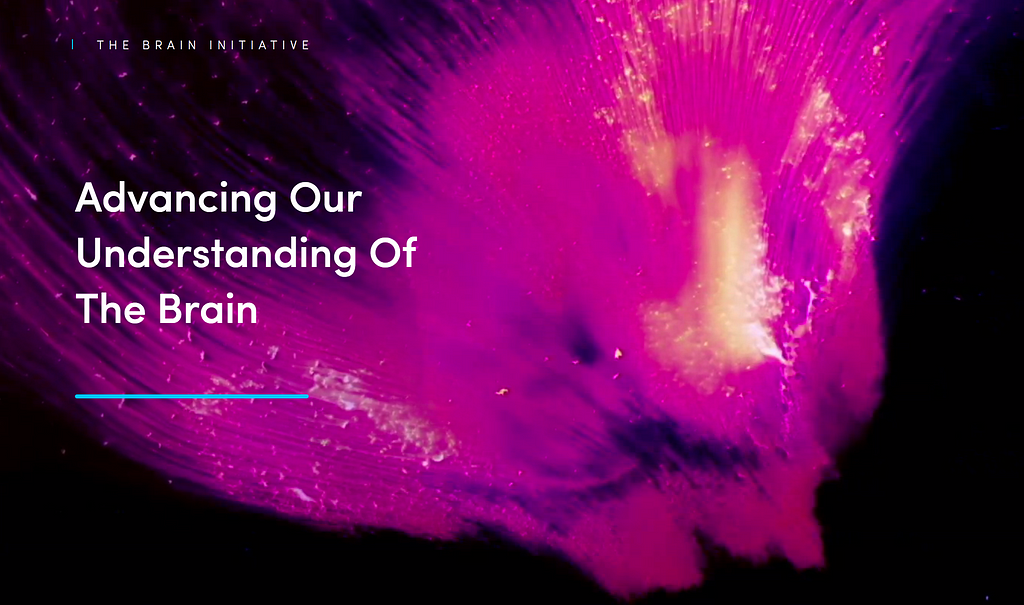
The dynamic new algorithms that pushed us past deep learning and powered the fourth wave of the intelligence revolution sprang from world wide efforts to map every single neuron and connection in the human brain. Eventually the processors and biotechnology caught up with our ambitions and scientists succeeded beyond our wildest expectations.
Like the human genome project before it, the brain mapping race around the globe took decades and cost billions. But the breakthroughs drove the price down dramatically and a few decades later you could map the human mind for a fraction of world reserve currency Bitcoin and back it up to distributed, decentralized storage running on foglets.
It got so cheap that everyone from the local handy man to the most powerful CEOs on Earth, started snapshotting/backing up their mind at different stages in their life in the hopes of being recreated later with clones or virtually.
What did neuromapping have to do with AI?
Data scientists didn’t discover the secret universal learning algorithms at the heart of the human mind but they could watch them in real time as brain simulations ran on the neurochips inspired by the projects.
We didn’t discover how to learn. We hacked learning.
Deep learning, symbolic reasoning and genetic algorithms looked primitive by comparison to the rapid learning systems of the 2040s to the 2060s.
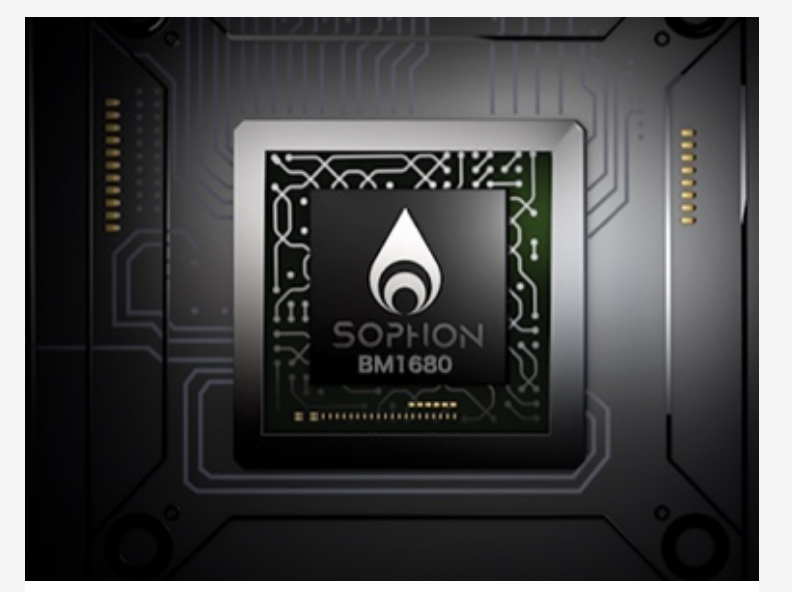
Cryptocurrency ASIC makers out of China were the first to build the radical new chips that changed the way we processed intelligence, taking their fabrication and design skills to the next level, dominating the next wave of computing. Quantum computing breakthroughs from World War III used for encryption during the war, lead to a fifth wave that made even the neurochips look underpowered, until the older chips made a comeback by using wetware made from stem cells grown into artificial neurons.
Now, everything is alive.
Our smart bandages monitor our wounds and tell us when to change the dressing or whether the infection is healing or getting worse. Tiny patches in the bandages react to infection by releasing antibiotics.
Pill bottles remind us to take our medicine or warn us not to take it if we wake up groggy from a night of drinking and try to take it twice.
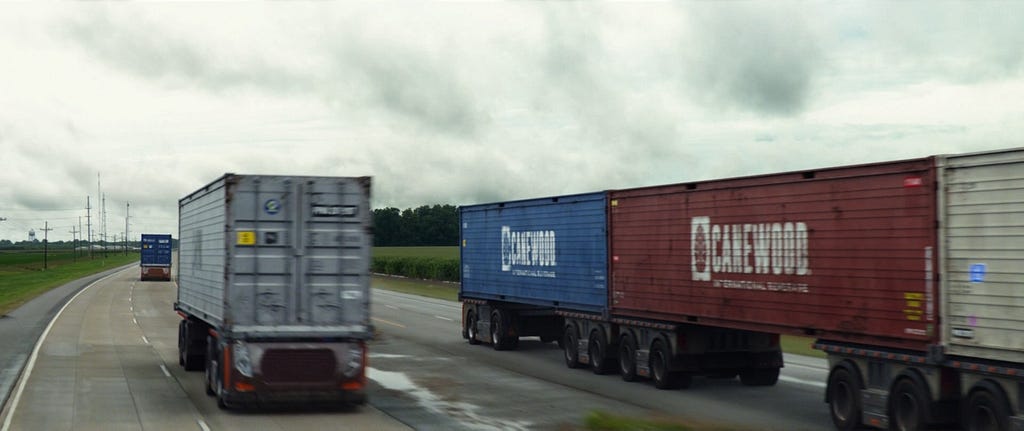
Self-driving trucks with no cab for humans race along the highway at 200 miles per hour on special roads across China and the US. They’re nothing but stripped down flatbeds with wheels, carrying standard smart shipping containers. The containers know every single object inside of them, the objects scanned by nanosats and tracked in space forever on the AR/IoT web. As soon as dishes come off the industrial 3D printer at the autofactory, they’re tracked right into your house.
When the dishes break they call for a replacement themselves.
The containers arrive on self-piloting boats. When pirates try to hijack the containers, the boats go to evasive maneuvers and the containers screech and call for the coast guard or the navy.
A shipment of the latest and most fashionable black jackets hit your house via drone delivery. When you go to Berghain in Berlin to dance the day away, your jacket adjusts its threads as the temperature changes or loosen the threads as it gets hotter. No more wearing layers as you move from hot to cold in the ice and snow of winter to the warmth of a self-driving car.
Of course, if you’re at Berghain you just take it off as soon as you get inside anyway and the robot coat check system of floating hooks scans your iris ID and messages a claim code to your info-necklace.
Our eye glasses and contacts and shades show us meta-information about the world around us, from the contact information of people we know, to details of historical landmarks, to warnings of high crime areas to avoid, to the location of friends and family who have given us permission to see where they are during certain times of the day.
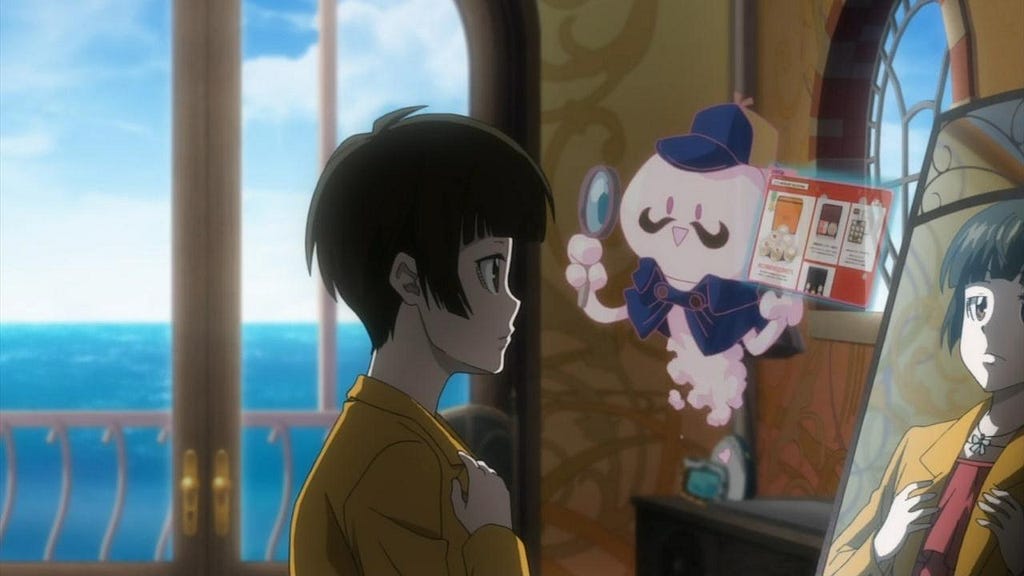
An AI personal assistant that lives in your necklace, projects as a hologram, and splits time between your ear buds and your augmented reality contacts, processing half of its routines on distributed foglet platforms, does all kinds of tasks that used to take hours. It bugs you to get up in the morning, sets meetings, finds a nice bottle of wine on the way to a party, crafts a killer workout to get you into summer shape, suggests the latest fashions and finds the perfect restaurant to take a date, while telling you what to say on that date to help you seal the deal with a night of passion.
Kids used to have to use their imagination with their toys. Remember army men and action figures? You had to pose them yourself and give them voices and stage epic war sagas with them in the backyard.
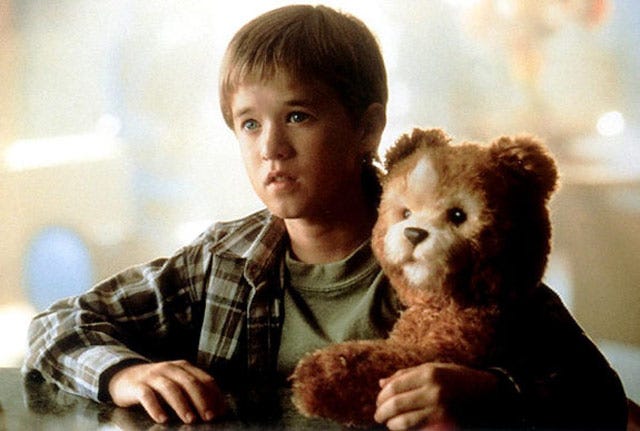
Today’s kids don’t want a teddy bear that just sits there slack-jawed, staring at the wall. Teddy bears now walk and talk and get kids to beg their parents to buy things. And action figures that don’t run and leap and charge the backyard battlefield screaming are worthless except to collectors who pine for simpler times when the mind’s eye had a lot more work to do.
Toys used to say “batteries not included.”
Today’s toys should read “no imagination needed.”
It’s Toy Story come to life.
Students don’t write in a diary, they confess to one that talks back and gives them advice about their boy troubles and being popular in school.

Bikes have wobble detection and bizarre alien frames that look strange but were designed by machines to make them more stable. You could probably peddle them if you wanted to, but if you get tired the AI coupled with millimeter precise GPS takes over and drives for you.
Multi-material 3D printers and molecular printers in factories call out when they’re breaking down and order maintenance. Robots swap the printers when they break and feed them more bars of metal and wood and rubber.
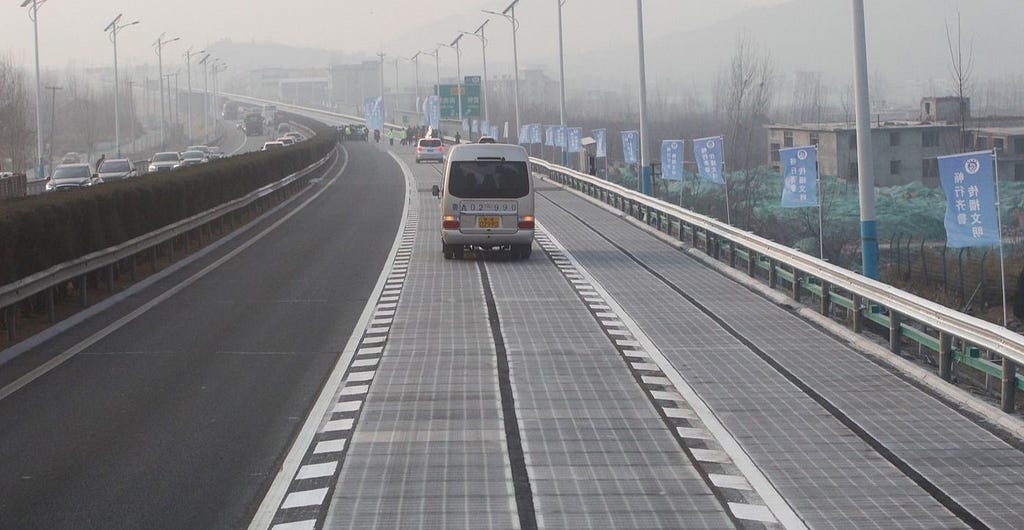
Old roads are repaired by drones with fast hardening concrete. Smart roads, made of industrial glass solar panels display messages and let the city grid know when they need repairs.
Fire suppression systems don’t just put out fires in houses, they direct families where to run and what rooms to avoid, all while keeping them calm with a soothing voice and calling autonomous fire trucks.
But it all started with self-driving cars.
Autonomy and the Brave New World
By the 2020’s self-driving everything had swept across the planet.
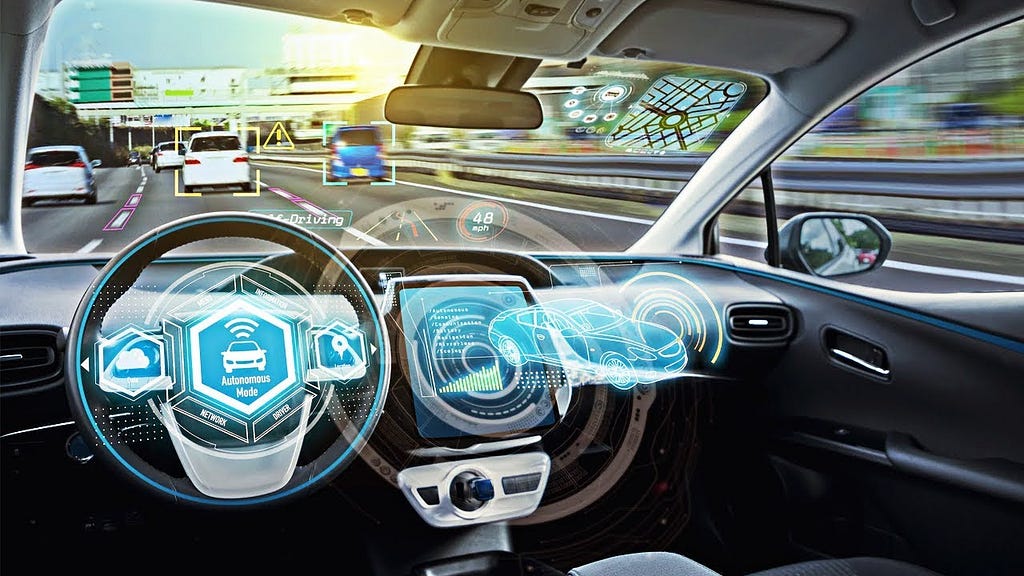
Autonomous cars saved millions of lives each year.
Turns out humans are terrible drivers.
It takes perfect concentration to drive a car right. And that’s something humans just don’t do with their ever-deteriorating attention spans.
Globally in 2019 1.25 million people died in car wrecks. That’s 3,287 deaths a day. More than 20–50 million more are injured or disabled.
Still humans were under the delusion that, like Rain Main, they’re very, very good drivers. Humans have the great ability to fool themselves that way.
Early on, every fiery self-driving car crash made the news. Angry people pointed out how dangerous they were and some reactionary governments banned them.
Those governments paid a heavy price just like the ones that banned Uber in favor of cabs that everyone hated. You can’t hold back the tides of time. Eventually, the death toll from human drivers looked absurd next to countries with rapidly growing populations of autonomous cars and citizens everywhere demanded their governments revoke the bans.
After a decade no self-driving car crashes made the news because humans killed so many more people with their inability to pay perfect attention to ever changing road conditions.
By 2029 the death toll plummeted due to advanced monitoring cameras that could spot crashes in seconds and send paramedics screeching into the night to save drivers. But it wasn’t just the cameras. The cars themselves could contact the city grid and tell them what happened, reading data from their black box and signaling traffic control to reroute cars and send help.
By 2039, the cameras had spread from superhighways to backroads and they called out to autonomous paramedics that rushed the scene with super-human precision, the bots prying victims from collapsed frames and triaging wounds with next-wave antibiotics and material that expanded to fill the gash and stop sepsis in 15 seconds flat.
Steering wheels, once required by law, disappeared all together.
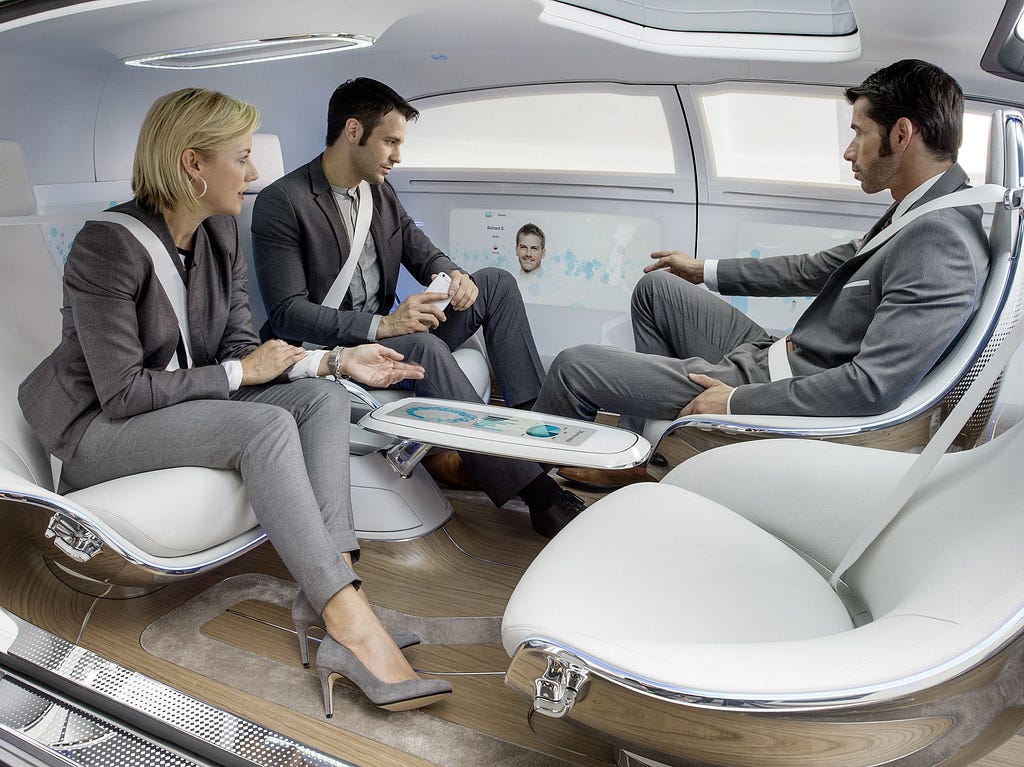
The inside of cars were redesigned as mini-apartments on wheels, with tables and chairs facing each other.
Drinking and driving became a good thing.
Older generations who swore that people would always want to hold the wheel and feel the road rumbling beneath their feet had passed on into the great beyond. Younger generations couldn’t understand what all the fuss was about when they’d rather be chatting, working or putting their feet up as they read a book on their glasses or augmented eyes.
By 2049 humans driving was all but illegal without a special permit and barely anyone died on the road.
Human driven cars became a booming niche market, the way records did after the rise of CDs and Napster and Apple Music and Spotify.
But it wasn’t all good.
Those self-driving cars that saved so many lives also cost a billion lives.
Fast Food Nation and The Winds of World War III
The doomsayers were right.
AI did kill off jobs faster than we could replace them.
They were wrong too but that would take time and a disaster to set the world to rights once more.
By 2030, a lethal combination of rising authoritarianism, democratic decay, automated 3D and molecular printer driven factories and self-driving cars created the perfect storm.
And fast food bots.
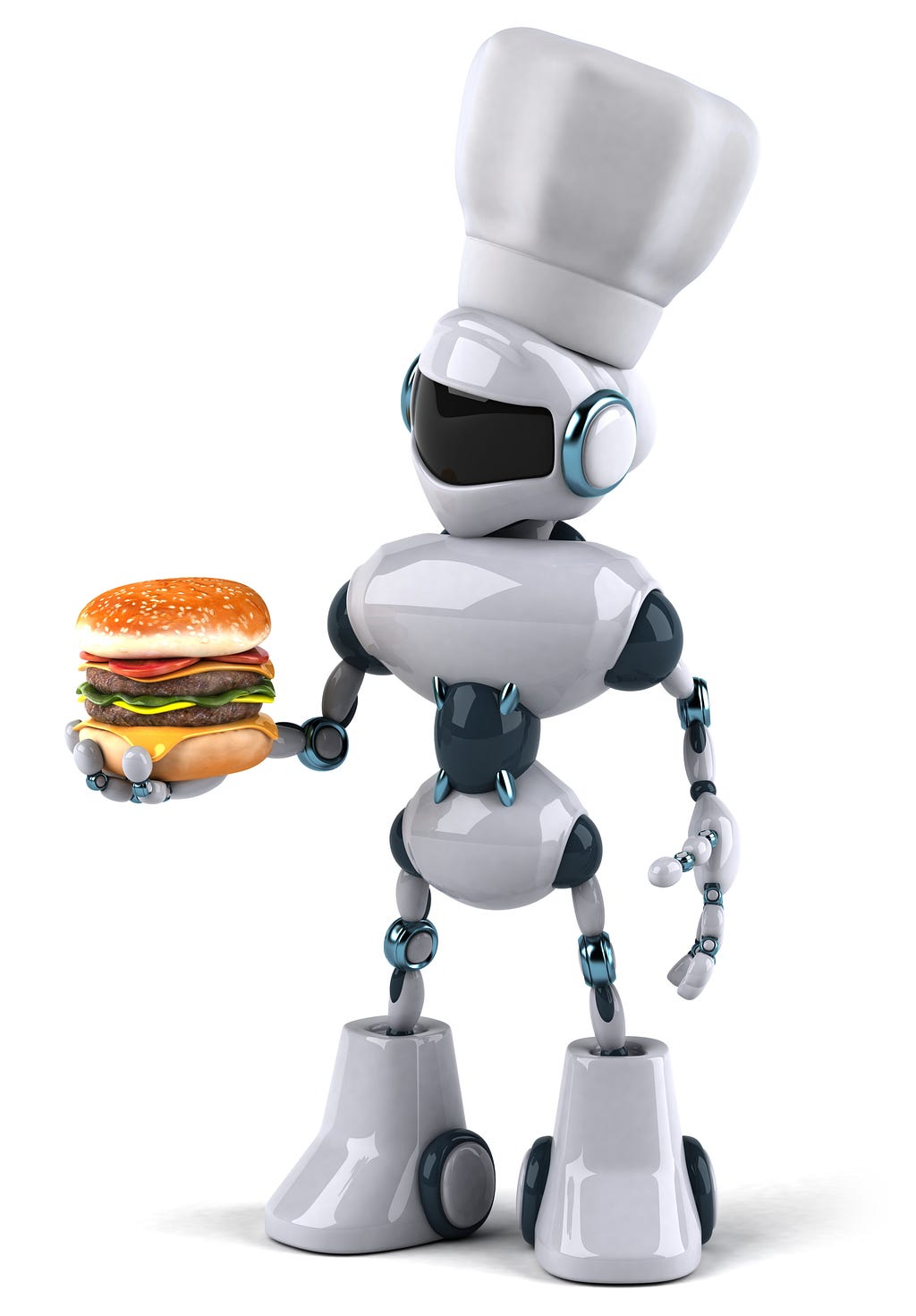
The fast food industry embraced automation with open arms faster than anyone expected.
3.8 million jobs vaporized overnight as the fast food industry replaced people with machines.
It started with janitors. Why pay someone minimum wage when you can spend $10,000 and get a machine that cleans perfectly, never gets tired, only needs maintenance once a year, and lasts fifty years?
Pretty soon burger flippers, fry cooks and everyone else was out. The franchises that resisted went out of business.
Governments didn’t react fast enough. When they tried to pass laws to keep people in jobs, they only accelerated the collapse as the fast food chains that couldn’t use the loopholes went bankrupt.
People stopped buying cars when sharing economy firms could get one to most people in a big city in five seconds at less for satoshis on the bit-USD. Economies dependent on food service jobs and cranking out parts of the global supply chain of vehicles crashed hard.
Singapore and Switzerland suffered as lending and investment dried up. The African miracle that had seen a dozen countries in the massive continent take over the low cost manufacturing of goods from China came to a grinding halt. The economic contagion quickly spread to Russia and the EU, sweeping up Germany, France, Italy before taking down whole swaths of China and the US.
Like so many times in our history, with people out of work, they get angry and they mass in the streets. Collations form and extremist groups multiply like cancer cells. Soon young men are battling it out in the streets because they don’t have any other outlet for their energies.

Unlike the wars of the past, when World War III hit, no country on the planet was spared.
It started as stealth cyberwar that quickly erupted into all out assaults on the electrical grid and communications infrastructures, leaving people in the dark and cut off from the wider world.
In weeks, the superpowers of the world declared open war.
AI played a thousand different roles in the rising conflict.
Bullets rarely missed as smart rounds curved around corners and slammed targets with shark like killer instinct.
Micro-drone swarms stalked cities, their tiny mind’s eye filled with ever changing targets. If they didn’t get their man, they recharged and went out again endlessly every night until finally they found their target, hitting it like a dart and exploding.
And AIs directed the war.
Like AlphaGo decades before dominating the best Go masters in the world with ease, the secretive quantum computing AIs fought billions of virtual battles in perpetual simulation, mastering ways to crush the enemy, from all out total war, to guerrilla war, to complex counter-insurgency tactics big and small.
They delivered comprehensive big picture strategy analysis and directed battles better than any general, sending troops to fight and die on the hills and the beaches. They sent men and machines to kill, the generals increasingly relying on them to win the war, rather than human instinct.
Special Forces landed in stealth jets and their personal battle assistant choreographed their every step as they crept into houses at zero dark thirty, killing high value targets before they even got out of bed. The soldiers were centaurs, their minds threaded with delicate neural laces, giving them direct access to real-time AI, juicing up their response times and their nervous systems, as their nanothreaded augmented muscles moved at super-human speed up the stairs.
But while the human toll was high, for every human that died, ten bots died.
A dozen different variants of robotic soldier joined the fight, from skeletal pack animals carrying heavy loads, to autonomous jets, to self-driving tanks to full scale robotic soldiers that fought and died besides their brothers and sisters in arms.
In the end, 10 billion machines and 1.5 billion souls perished when the last shot was finally fired and the world stepped back to see the horrors it had wrought.
The Phoenix and the Ashes
But like all wars before it, it was not the end of life as we know it.
Humanity rose from the ashes.
It was the war to end all wars but what followed was an profound era of peace.
People came home and never wanted to fight again. They wanted to settle down and have children and spend time laughing and drinking with friends and shaking off the wounds and scars of the past.
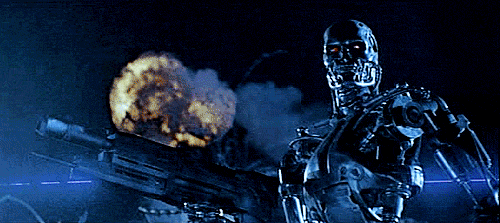
War accelerates technology.
World War II started with propeller planes but five years later jet engines streaked across the sky, not in time to win the war, but in time to change the way people traveled the world after the war.
Many of the technologies that mushroomed during World War III, like quantum computing, augmented reality, digital ledgers, crypto-voting platforms, meshnet encrypted communication, molecular printing, payment systems, universal learning algorithms reverse engineered from simulating human brains, and advanced medical diagnostics swept into the civilian world.
AIs that once directed heavily bearded spec-ops soldiers to their prey, now chat with children about how to overcome bullies and make new friends.
The killing fields were covered over with parks.
Battle AIs were repurposed to run entire economies, ordering goods and services before people even knew they wanted them and directing factories to speed up or slow down.
Robotic soldiers were scrapped or redeployed as police or to plant trees to help the ecosystem recover from the devastating effects of all out war. The drones took to the scorched fields and the skies and rapidly planted trees and flowers and food and stimulated them with ultraviolet light and a perfect PH balance of food and nutrients designed to rebuild the broken soil.
Automated, self-contained hospital pods revolutionized paramedics, bringing the hospital to the patient.
And the death toll had a silver lining.
When we don’t solve our problems, nature solves them in the most brutal and ugly ways. With less people needing jobs, the job market took off into a booming era of unprecedented expansion.
Broken windows are a fallacy in day to day economics. But sometimes a lot of broken windows can reboot the entire world economy.

Maybe the mad titan Thanos was right after all?
Either way, the economy boomed at a fevered pitch in the 2040s and 2050s.
AI created an explosion of new jobs the likes of which the world had never seen. First came the destruction but then came the creation. New jobs we couldn’t imagine before the old ones disappeared started to flourish.
Turns out the janitor bots needed a lot more maintenance then their creators thought and a whole industry spawned to clean them and upgrade them.
Car modifiers and after-market upgrades to modular vehicles erupted all over the world, creating new economic powerhouses.
AI psychologists traced down problems when complex systems went haywire.
Genetic designers, helped with centaur AIs, created brand new foods and organisms and antibiotics and medicines.
A new generation of children shrugged off debt and didn’t bother owning homes or cars or big TVs. They embraced a just-in-time sharing economy with AIs directing many of their day to day actions in a way that would have terrified the suburban middle class of generations past. They moved from place to place, their computers inside their heads as they traveled the world and worked remotely.
More and more people had grown up with AI and thought nothing of enhancing their intelligence with a neural lace or augmented eyes that could see with superhuman perfection. People worked side by side with AI, as politicians and big companies and decentralized autonomous organizations (DAOs) learned how to balance the needs of man and machine.
The Forest Grown Wild
In just fifty years we saw the mustard seeds of the dawn of the Age of Intelligence grow into a wild and uncontrolled forest.
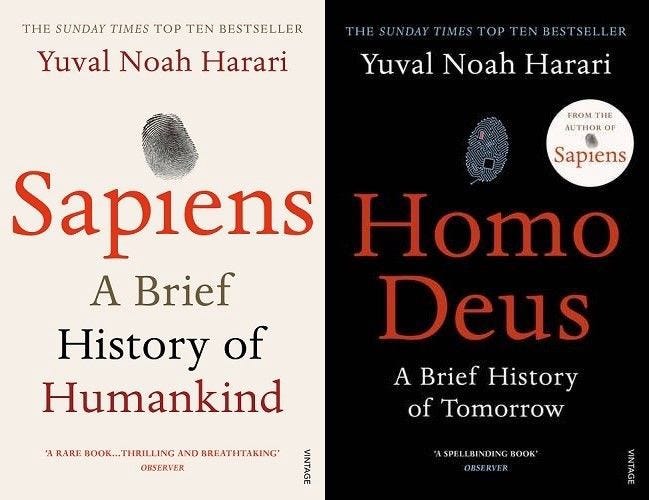
Humanity suffered, persevered and prevailed.
A new Greatest Generation grew stronger, their minds expanded with intelligent software and wetware, a generation of early post-humans pointing the way to Homo Deus.
The universal power of AI mirrored the demonic aspects of the human mind and the better angels of our nature too.
It helped us lose our minds and kill each other, as we love to do periodically, and it repaired those minds with AI derived psychotherapy techniques like targeted electrotherapy and pleasure center stimulation implants. When that didn’t work the machines designed happy pills that made the Prozac of the past look like Gummy Bears.
It augmented our health care and automated entire economies.
Roads got rightfully repaired, tracked by drones and cameras that never slept. And people stopped dying on those roads on the way to work.
Our clothes and handbags woke up. Our smart phones faded into our necklaces and contacts and augmented eyeballs.
The very streets and sidewalks beneath our feet got wise.
And for a time people returned to balance and prosperity in the eternal cycle of life and death, boom and bust, happiness and sadness.
###########################################
In the next article, we’ll go well beyond the next fifty years and take a look at the world in five hundred years, a world beyond all imagination.
###########################################
If you liked this article come see me talk on AI in Five, Fifty, and Five Hundred Years at Rise of AI in Berlin, May 16 2019 and get 25% off tickets!
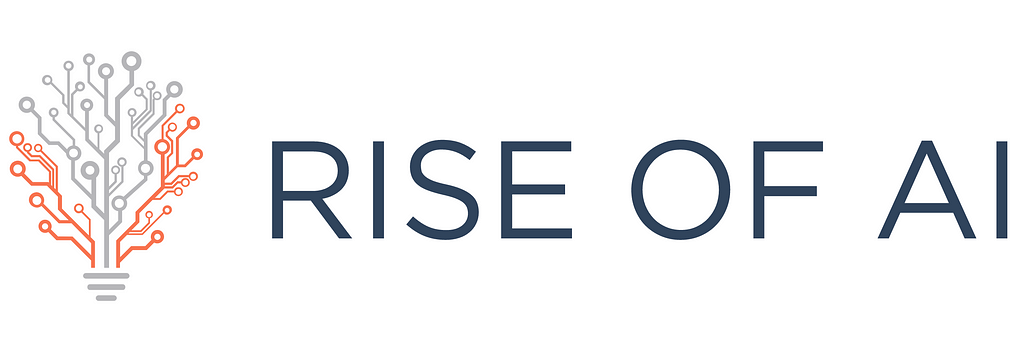
##########################################
If you love my work please visit my Patreon page because that’s where I share special insights with all my fans.

Top Patrons get EXCLUSIVE ACCESS to so many things:
- Early links to every article, podcast and private talk. You read it and hear first before anyone else!
- A monthly virtual meet up and Q&A with me. Ask me anything and I’ll answer. I also share everything I’m working on and give you a behind the scenes look at my process.
Access to the legendary Coin Sheets Discord where you’ll find:
- Market calls from me and other pro technical analysis masters.
- The Coin’bassaders only private chat.
- The private Turtle Beach channel, where coders share various versions of the Crypto Turtle Trader strategy and other signals and trading software.
- Behind the scenes look at how I and other pros interpret the market.
############################################
I’ve got a new podcast, The Daily PostHuman, covering crypto, AI, tech, the future, history, society and more! Check it out for expanded coverage of my most famous articles and ideas. Get on the RSS feed and never miss an episode and stay tuned for some very special guests in the next few months!
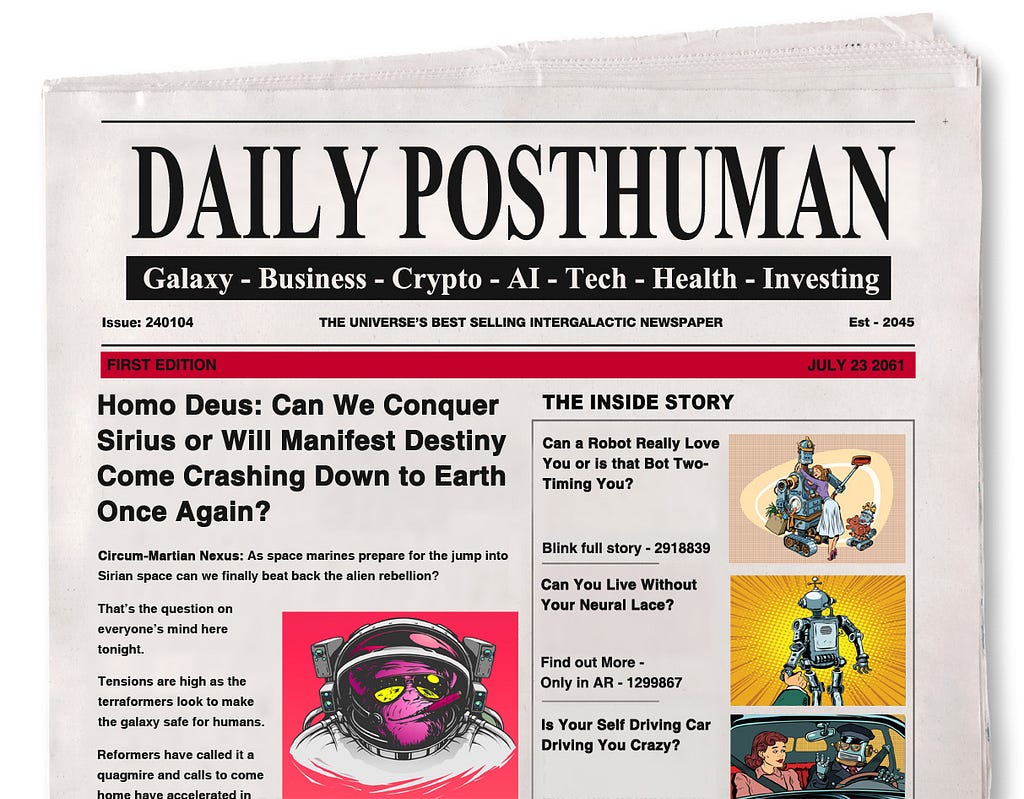
############################################

A bit about me: I’m an author, engineer, pro-blogger, podcaster and public speaker.
You can check out my latest novel, an epic Chinese sci-fi civil war saga where China throws off the chains of communism and becomes the world’s first direct democracy, running a highly advanced, artificially intelligent decentralized app platform with no leaders.
You can get a FREE copy of my first novel, The Scorpion Game, when you join my Readers Group. Readers have called it “the first serious competition to Neuromancer” and “Detective noir meets Johnny Mnemonic.”
############################################
Lastly, you can join my private Facebook group, the Nanopunk Posthuman Assassins, where we discuss all things tech, sci-fi, fantasy and more.
AI in Five, Fifty and Five Hundred Years — Part Two — Fifty Years was originally published in Hacker Noon on Medium, where people are continuing the conversation by highlighting and responding to this story.
from Hacker Noon https://hackernoon.com/ai-in-five-fifty-and-five-hundred-years-part-two-fifty-years-1deeb7c5408c?source=rss—-3a8144eabfe3—4
